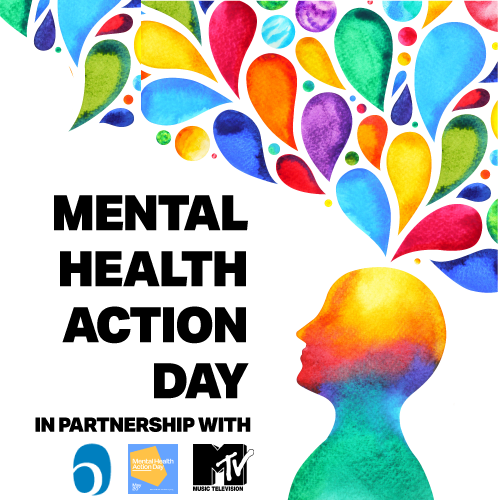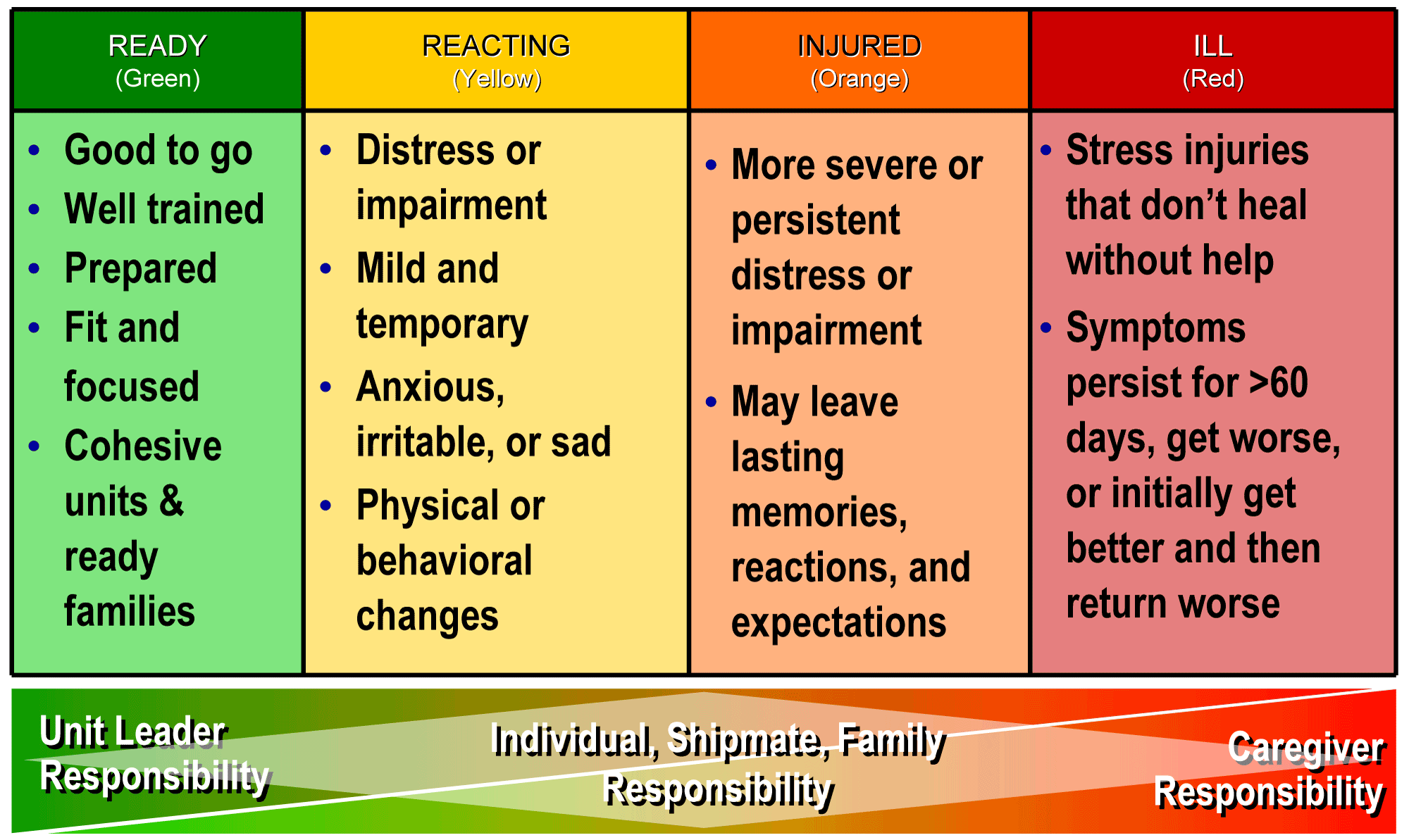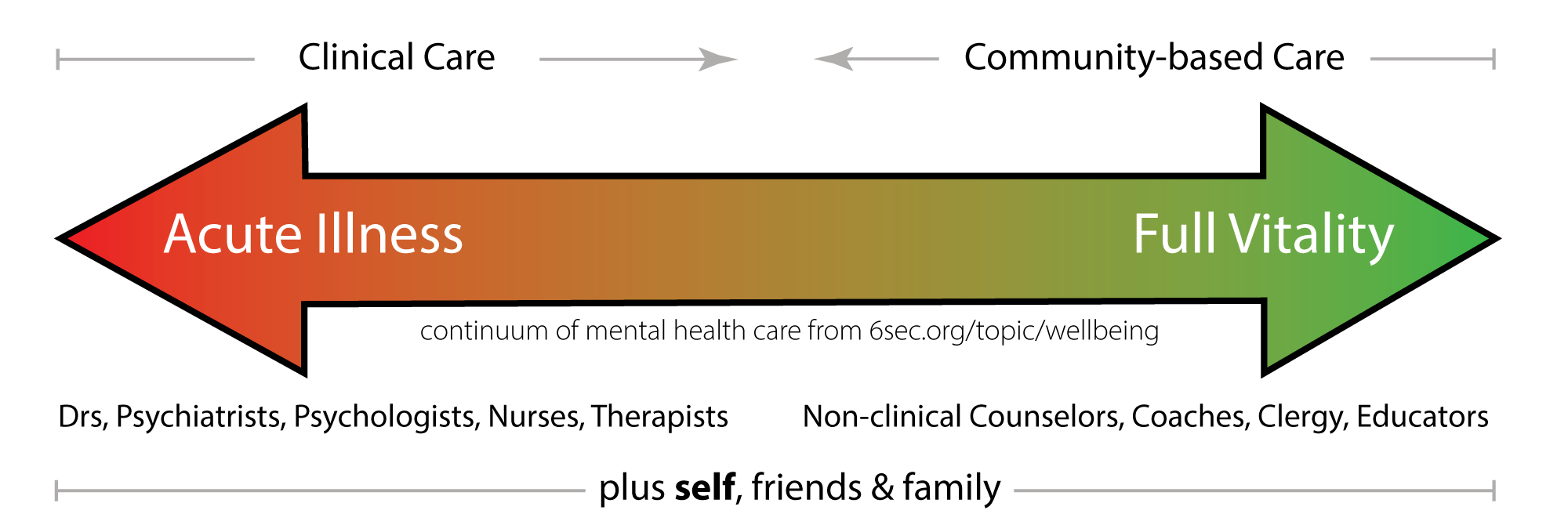Emotional Intelligence for Positive Mental Health
with 50+
“mini workouts”
take action
to feel&
be better
If you were to ask five friends if health and fitness is important, how many would say, “Yes!”? If you asked them, “Other than going to a doctor, do you have ways to improve your physical health?” — how many would say, “Yes!”?
What if you asked the same questions about mental health?
Unfortunately, when it comes to mental health, many people don’t know the value, don’t know they can take action, or how. As partners with MTV for the first-ever Mental Health Day of Action, it’s time to rethink mental health as a resource for thriving, and learn how emotional intelligence can help us create full vitality.

Mental Health is Health
There are many complex reasons why it’s harder to even ask that question, and talk about the answers — but one basic issue is that, for many, the term “mental health” means the same thing as “mental illness.” Looking at the World Health Organization website, I was surprised to see that while they say, “Mental health is more than the absence of mental disorders,” they still explain that what determines mental health is the absence of impacts (such as trauma, poverty, or abuse). That’s like saying, “if your arm isn’t broken, it must be strong.”
This deficit-oriented thinking leaves us in a problematic binary where you’re either ill or healthy. And since mental illness has been so poorly understood and so painfully stigmatized, that binary thinking leaves us without the nuance to describe the middle ground. Even saying, “my mental health isn’t optimal today” sounds scary for some people, because in this binary system, we’re reduced to either, “I’m fine,” or, “I’m ill” — and neither label is particularly helpful.
Mental Health is Health
There are many complex reasons why it’s harder to even ask that question, and talk about the answers — but one basic issue is that, for many, the term “mental health” means the same thing as “mental illness.” Looking at the World Health Organization website, I was surprised to see that while they say, “Mental health is more than the absence of mental disorders,” they still explain that what determines mental health is the absence of impacts (such as trauma, poverty, or abuse). That’s like saying, “if your arm isn’t broken, it must be strong.”
This deficit-oriented thinking leaves us in a problematic binary where you’re either ill or healthy. And since mental illness has been so poorly understood and so painfully stigmatized, that binary thinking leaves us without the nuance to describe the middle ground. Even saying, “my mental health isn’t optimal today” sounds scary for some people, because in this binary system, we’re reduced to either, “I’m fine,” or, “I’m ill” — and neither label is particularly helpful.
Shifting to a Continuum of Emotional Health
The obvious antidote to this binary label is a continuum where we acknowledge a wide range of the human experience. Searching for such a model, there are many structures for “continuum of care” that focus on the clinical side. But what about the HEALTH side? Just as physical health might go from “barely survive a car crash” to “ready to run an ironman,” what words might we use for a continuum of mental health? At one end is the abject despair and devastation of crisis. At the other is a radiance and vitality of full capacity.
One of the principles of linguistic anthropology is that a wide range of words shows that a concept is important in a particular culture. The classic example is that Inuktitut has over a dozen distinct words to describe kinds of snow. What does it tell us that in English we have so many words for money and so few for mental thriving? Here is an example of a continuum that is expanding the vocabulary for positive mental health.
Another continuum comes from the US military; the Bureau of Medicine was charged to confront this challenge of binary thinking about mental health in relation to stress. PTSD, post traumatic stress disorder, is a significant mental health challenge for this community. In the past, soldiers were either “fit” or “broken,” and this binary blocked people from getting help. Increasingly there’s recognition that stress can be considered like an injury. Around 2010, various parts of the US Department of Defense began adopting a “stress continuum” with four levels:
As shown in the graphic above, a key feature of this model is the recognition that there are aspects of mental health that require medical intervention, but there are other aspects that are the responsibility of the individual and command. Variations on this graphic are widely available, this one is from the US Navy & Marine Corps’ Combat and Operational Stress First Aid: Responder Training Manual 2011.
What Comes Before and After Clinical Care?
Just as we can develop a continuum to understand a more nuanced view of mental health, mental health care can also be considered on a continuum – like in the DoD Stress Continuum model. In terms of physical health, more acute illness is treated by doctors, and as we move into wellness there is a wide range of people with varying levels of training to support people… from physical therapists to physical education teachers in schools, from yoga instructors to fitness coaches, from nutritionists to the person working in the health food store. There are also a wide range of places to work on this non-clinical side of health… gyms, clubs, even VR games. Collectively, we can call these options “community based” because they’re part of our day-to-day living.
What about in the space of mental and emotional wellbeing? While community-based mental health isn’t as well developed, we still have some options. Many items from the physical-health “menu” also apply to mental health, because exercise, being outside, and being in positive relationships are all drivers of mental health. Spiritual and religious practices have also been shown to improve wellbeing. So in this community-based mental health space we have people such as EQ coaches, teachers specializing in social emotional learning, clergy, and people who care. It’s also essential to remember, that just as with all aspects of health, each of us plays an essential role for ourselves, as do family and friends.
(click the image to enlarge)
One of our goals in building the world’s community of emotional intelligence practitioners is to equip more people with the tools, skills and support for these community-based mental health roles.
Action Steps for Positive Mental Health
As mentioned previously, WHO offers a definition of mental health that’s positive, but the solutions are all about addressing deficits. If we shift to an asset-based approach, what are the determinants of mental health? In developing our key topic page on mental health and wellbeing, I found that the European Psychiatric Association reported an asset-based model — one pillar of which is, the “ability to recognize, express and modulate one’s own emotions, as well as empathize with others” — which sounds a lot like a definition of emotional intelligence!
Often lost in complex theory, the foundation of emotional intelligence is a simple idea: Emotions are data that we can learn to use to make more effective decisions. Literally, be more intelligent through our emotions. Not, “control emotions,” or “fix,” but tune into feeling as something useful. In terms of mental health, what if feelings are signals that exist to guide us toward that “full vitality” end of the continuum? A radically helpful view of emotions is to consider that all feelings are allies – and the first step to accessing the support of our own emotions is to learn the language, to enhance our emotional literacy.
Quick “Workouts” to Strengthen Mental Health
What action steps can you take to strengthen positive mental health in under 15 minutes? At the start of this article, when I asked you about talking to five friends, I mentioned two of the key ingredients for being motivated for change: Seeing the importance, and having actions to take. On the “community based mental health” side of the continuum, there are many ways for us to exercise self-care, and it doesn’t need to take a long time. I asked coaches and practitioners in the Six Seconds Emotional Intelligence community to share ideas.
One of mine is to make a cup of my favorite tea in a beautiful cup and slowly drink it.
Another is simply to name 5 different feelings I’m experiencing right now. Here’s a free emotions wheel to help with that.
Try these “workouts” from Six Seconds’ members around the globe, and add in the comments below to tell us which worked best for you.
Gratitude Journaling
Mindfulness exercises (ex. while breathing deeply thinking about 5- things you see; 4- things you hear; 3-things you feel; 2- things you feel; 1-thing you taste)
Coloring books
Dot-to-dots
Taking a walk (usually while listening to a guided walking meditation)
– Bre Wafford
Napping.
Breathe with the 4,7,8 method. Breathe in for 4 seconds, hold for 7, release for 8 seconds.
– Tiffany Varty
Trying to do it more, but journaling while my favorite tunes are in the background
Five minute yoga routine
Essential oils diffused and hot shower or bath
– Brittany Brooks
Playing my guitar
Sitting in nature
Massaging my scalp
Riding around Baltimore to see how difficult some people’s lives are definitely creates healthy gratitude
Nature sounds or 432 hz music
– Victor Ferguson
Cuddle with my dogs
Cook
– Mike Thomas
Paint 🎨 though I’m terrible at it – gives me immense pleasure – I have a quiet corner of ‘during stress ‘ paintings with dates that bring back great memories of how they were dealt with about who/what helped.
– Prakash Mathur
🦩Body Scan Meditation
🧘♀️ listening to beautiful music. Entirely immersed into self-care, self-talk, and Self-Awareness. ☕🫖
– Daeyoung Kim
I have used tea to have meaningful conversations over the phone or on video chat…
Having some time in the day where I just try to sit and see, hear or smell by being completely present (by taking a short walk in the nature) and the labeling what I can sense
– Priyal Thankur
My friends and I recently did a group activity – adult colouring. Yes! They have adult colouring books. It helps relax the brain and reduces thoughts of a restless mind. 15 minutes of colouring can help you take a brain break.
– Teena Tilbrook
Going on the food theme – either alone or now (with vaccinations): cook an item that is repetitive (but not boring) like dim sum or something like gnocchi there is a grace and mindfulness that once you get the finger “muscle memory” going you can kind of enter into a “dumpling flow state”
– David Bransten
Mine is to cook a favorite dish and share it with someone else.
– Huong Vu
My fav activity to support my mental health is to sit down by the ocean – listen and watch the waves – release what I don’t need (i.e.stress) into the water and welcome what I want (i.e. calm) from the water. 🌊
– Joanna Brewster
Mine is to turn on slight acoustic music while rearranging some things in my house, sweep and clean them then enjoy seeing all stuff in a new order 🤣
– Huong Nguyen
I help my mental health by playing the piano from the deepest (sadness) song to the most jolly one — it helps me move through emotions smoothly
– Loulwa Feteih
I improve my mental fitness by either going swimming in the pool, or snorkeling and scuba diving In the sea… listening to my breathing and being disconnected underwater and detoxing from the on ground chaos… admiring the reflections and patterns in the pool or the beauty of the deep sea life.
– Solafa Batterjee
I support my mental health by taking a walk in nature & grounding myself by touch leaves and smelling flowers 💐
– Angela Giacoumis
I walk in nature listening to a mindful app; my favourite is Insight Timer ~ free & accessible.
– Alison Lalieu
Watch the sunrise
Cuddle with my dogs and my heavy anxiety blanket
Get a massage
Write in my “reasons why” journal (reasons why I can feel gratitude and awe)
– Fiorella Velarde
I find exercise helps me most to feel mentally healthy. Even if I do not have time for a full workout, I try to include some sort of flowing movement every day: a few sun salutations, dynamic stretches or a short walk really help.
What also helps me feel positive is learning something new by reading a few pages of a book, listening to a podcast or watching a TED talk.
– Béatrice Frank-Fahle
I created a mental exercise based on neuroscience, I call it the mental pause. It is basically how to keep both networks of the brain engaged at the same time while regulating breathing:
- Imagine drawing a big triangle with a chosen color on your brain’s screen
- Synchronize counting (1,2,3) as the lines of the triangle appear
- Synchronize breathing in, out and hold with the lines and numbers.
Basically your brain will be paying attention to shape, color and counting numbers while you are also regulating breathing. While doing this exercise you will not be able to think of anything else!
When we train to do this exercise repeatedly it is exactly like taking our brains to the gym, a kind of mental fitness.
– Amina Khalifa
Motion shifts Emotion. Two minutes on a mini trampoline lowers my cortisol and boosts my serotonin. I can feel “angry off the scale” and after 2-4 mins of bouncing (especially to good music 🎶). I feel much calmer, and better ‘perspective’ on the situation.
– Joni Peddie
Looking after my kitchen garden, picking vegetables
– Mariella Bisaccia
Music…listening to and singing! Ideally in the car on my own with the volume pumped up 🎶 🎤
– Amanda Crawford
When I need to find inner peace, I like to be free with horses and surrounded by nature.
– Manuela Paseli
Breath meditation
Exercise
Cats
Study foreign Languages
– Feliziano Crisafulli
Yoga classes
Volunteer activities
Grateful attitude while walking on the beach 🏖
– Solange Waileman
Most of mine have been mentioned already – walks on the beach, swim in a calm ocean, cuddles with my dogs, bubble bath with good music mix playing! And a good laugh with my feel good people 💓
– Avril Kidd
Looking to the horizon in front of my house noticing something I’ve never seen before🌳🐑🦅🦧
– Liliana Selva
Watering my flowers 🌼 seeing them grow is very calming.
– Stef Picheca
Enjoying the sunset, music, reflective thinking 🤔 and reading
– Walid Hourani


